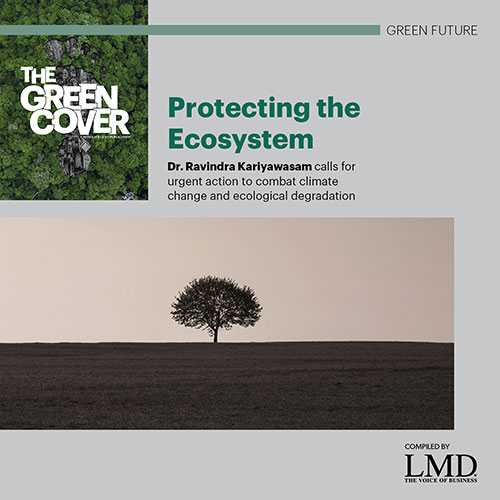NEWS JOURNAL
HEAT RESILIENT RICE
It may safeguard yields as climate warms
Peer reviewed journal Science says that a team of Chinese scientists has discovered the gene QT12, which helps rice maintain quality and yield during hot nights. The gene regulates starch and protein storage in grains under heat stress, and field trials showed up to 78 percent higher yields and significantly less chalkiness in the grains. Natural heat tolerant variants were found in indica rice, which offer a path for breeding or gene editing. This discovery could benefit other heat sensitive cereals such as wheat and corn too. Major rice breeders are already pursuing commercial development of heat resilient strains using QT12.
GIANT CORAL IN RED SEA
A rare find amid tourism development
New Scientist reports that a massive coral colony, likely Pavona clavus, has been discovered off Saudi Arabia’s Red Sea coast near the Amaala luxury resort site. Measuring 30 x 21 metres, it may be the Red Sea’s largest coral colony, and is estimated to be 400-800 years old. Despite 2024’s marine heatwaves, it remains in good health. Developers at Red Sea Global promise to protect the site amid growing tourism. Scientists say the find is remarkable and hope it offers insights into coral resilience. However, experts warn that tourism-related threats must be carefully managed to preserve this ancient marine ecosystem.
DEADLY RACE FOR KRILL
Krill overfishing is endangering whales
BBC Wildlife reveals that a dramatic 2022 sighting of 1,000 fin whales feeding off Antarctica underscores a growing crisis. Whales rely on vast swarms of krill for food and now industrial fishing fleets are extracting 500,000 tonnes annually for fish feed and supplements. Though the catch is a small fraction of krill biomass, it’s concentrated in key whale feeding areas. Scientists warn that this overlap may hinder whale reproduction, especially as climate change squeezes krill southward. With environmental safeguards weakening and krill also playing a key role in carbon storage, experts urge stricter regulation before the balance in Antarctic ecosystems tips irreversibly.
GREEN AVIATION AIMS
Low emission aviation fuel offers hope
Though low emission aviation fuel and electric aircraft are being hailed as the future for flying, Business Traveller UK magazine asks whether a truly green industry is achievable. While sustainable aviation fuel (SAF) made from waste oil and biomass, is the most promising solution, supply remains limited and costly. And electric and hydrogen planes are still decades from viability. While the EU and the UK enforce SAF mandates, political uncertainty in the US clouds progress. Experts warn that without major investment, net zero goals may evade achievement. The race is on to transform aviation but it’s not possible right now.
NORWAY’S EV CHARGE
Most car sales in 2025 will be electric
Norway aims to meet its goal of eliminating fossil fuel-powered car sales by 2025. According to Bloomberg Businessweek, this achievement is largely driven by generous government incentives funded by the country’s oil exports. These perks include exemptions from taxes, tolls and fees, as well as access to bus lanes and free parking. The popularity of electric vehicles (EVs) has skyrocketed and they account for 90 percent of car sales in some counties. However, in spite of the adoption rate, EVs still constitute only 25 percent of cars on the road, and this highlights the challenges in fully transitioning by 2030.
LEGO’S GREEN FUTURE
Factory is carbon neutral with solar power
Lego’s first fully carbon neutral factory in Vietnam is powered entirely by solar energy, reports TechLife News. The US$ 1 billion facility in Bình Dương province features 12,400 rooftop panels and a nearby solar farm to meet all electricity needs without fossil fuels. Designed to support Asia-Pacific markets, the site also provides 1,700 local jobs and advanced green infrastructure. With global emissions targets tightening, Lego’s move highlights Vietnam’s growing role in sustainable industry. The factory is a key milestone in Lego’s plan to cut emissions 37 percent by 2032, and set a bold example for eco-friendly manufacturing worldwide.












